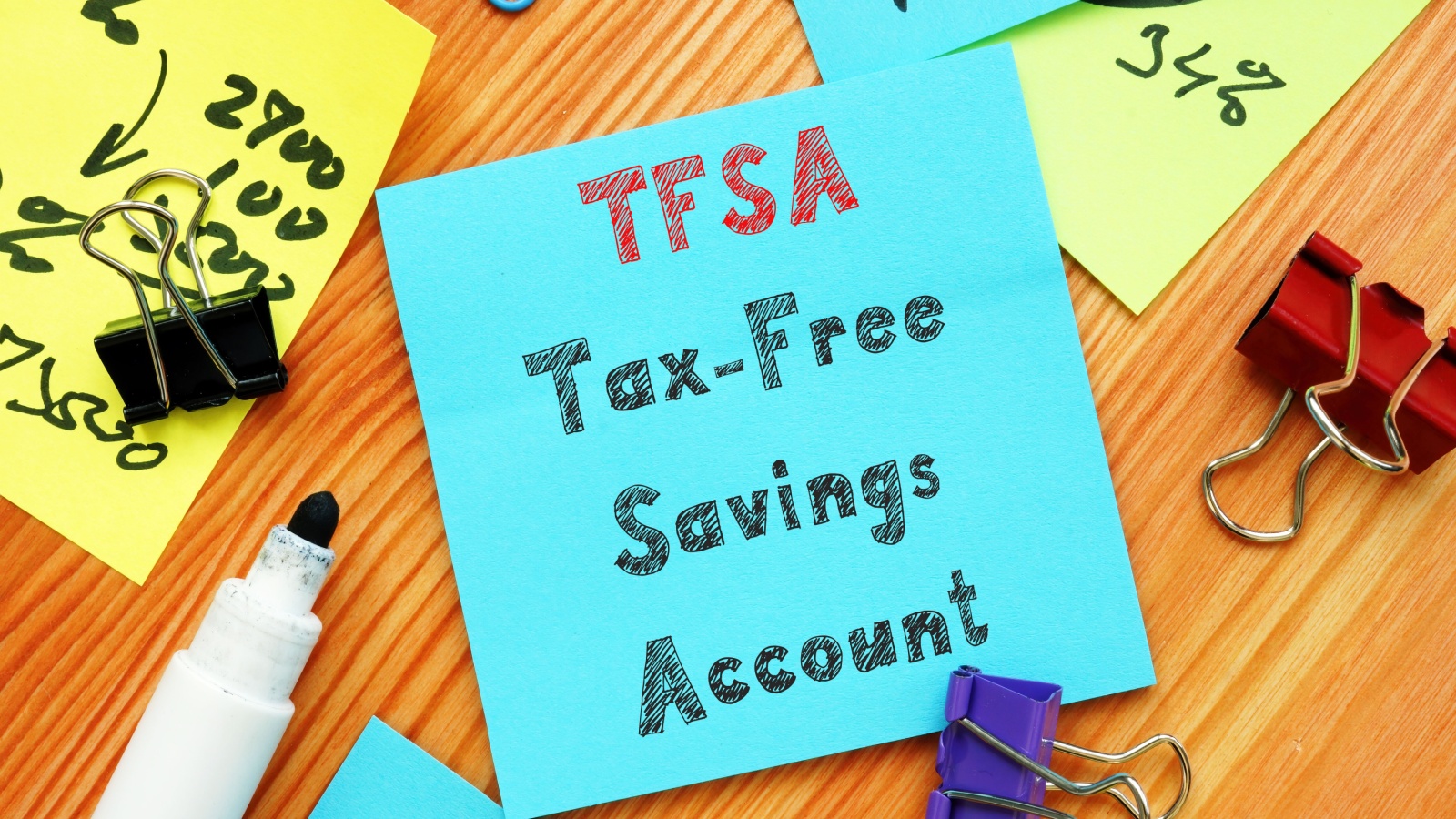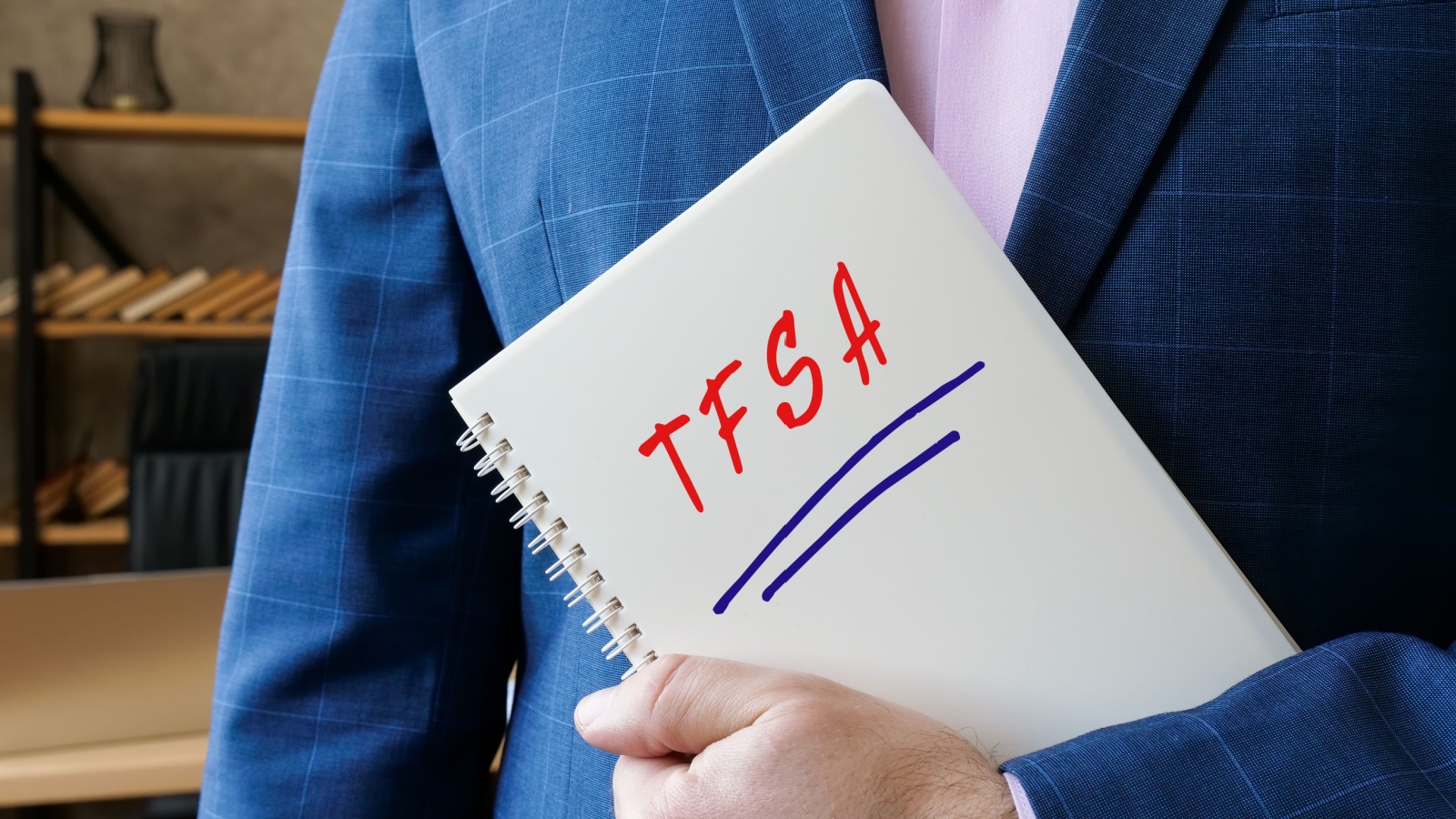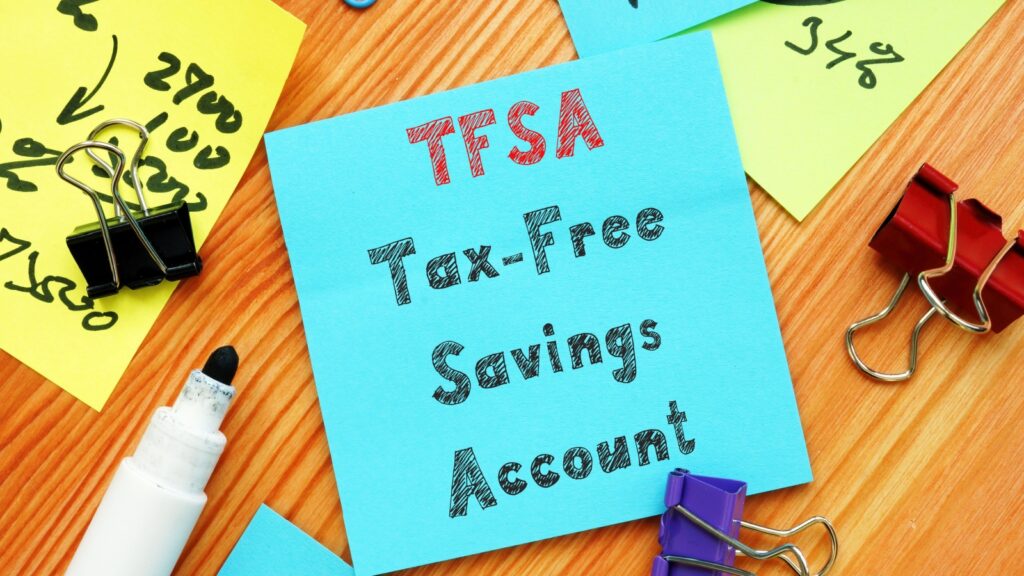A Tax-Free Savings Account (TFSA) is one of the most powerful financial tools available to Canadians for building long-term wealth. With its flexibility, tax-free growth, and wide range of investment options, it can serve both short-term goals and retirement planning. However, many people do not use the TFSA to its full potential, missing out on opportunities to grow their savings faster. Here are 23 ways to maximize your TFSA like a pro.
Understanding the Basics of a TFSA

A Tax-Free Savings Account (TFSA) is one of the most flexible investment tools available to Canadians. It allows individuals to save and invest money without paying taxes on earnings, which makes it a powerful way to grow wealth over time. Contributions to a TFSA are not tax-deductible, but all growth and withdrawals are completely tax-free. This makes it useful for both short-term savings and long-term financial goals. By understanding how a TFSA works and using it wisely, you can maximize benefits and build financial security while keeping more of your money in your pocket.
Knowing Your Contribution Limits

Every year, the government sets a maximum contribution limit for TFSAs, and the unused room carries forward. This means if you did not contribute in previous years, you can catch up later. Knowing your exact contribution room is crucial because going over the limit results in penalties. You can confirm your available room by checking through the Canada Revenue Agency’s online portal. Staying within your limit allows you to enjoy tax-free growth without worrying about fines. By tracking your contributions carefully, you can use your TFSA more effectively and avoid unnecessary mistakes that could impact your financial planning.
Avoiding Over-Contribution Penalties

Over-contributing to a TFSA comes with financial consequences. The penalty for exceeding your contribution room is calculated monthly, and it reduces the tax-free benefit of the account. Many people accidentally over-contribute when they withdraw funds and recontribute in the same year without waiting for the following year’s limit reset. To avoid this mistake, always monitor your TFSA room through official records and keep detailed notes of your deposits. Careful planning and regular reviews help prevent costly errors.
Using TFSA for Long-Term Investing

While many use TFSAs as savings accounts, they are equally powerful for long-term investing. You can hold a variety of investments, such as stocks, bonds, exchange-traded funds, and mutual funds. The advantage is that all growth from these investments, including capital gains and dividends, remains tax-free. This makes the TFSA a strong vehicle for building wealth over decades. By starting early and allowing compounding returns to work, you can accumulate significant tax-free gains.
Diversifying Your TFSA Portfolio

Diversification is essential for reducing risk and achieving steady growth, and the TFSA allows you to build a well-balanced portfolio. Instead of putting all your funds into one type of investment, you can spread them across different asset classes like equities, fixed income, and cash equivalents. Diversification protects your savings from market volatility while ensuring long-term stability. Since all earnings are tax-free, a diversified TFSA can accelerate wealth creation while lowering potential risks.
Reinvesting Dividends for Growth

One effective strategy to maximize your TFSA is reinvesting dividends rather than withdrawing them. When you receive dividends from stocks or funds held inside your TFSA, they are completely tax-free. By reinvesting these payments into more shares, you take advantage of compounding, which accelerates long-term growth. Over time, this creates a snowball effect where your investments generate more returns without extra effort. Since reinvested dividends also remain sheltered from taxes, they become a powerful tool for building wealth. Consistently reinvesting within your TFSA ensures that your savings grow faster while keeping your financial future more secure.
Taking Advantage of Tax-Free Gains

The greatest advantage of a TFSA is the ability to earn completely tax-free gains. Whether your investments grow through dividends, capital appreciation, or interest, none of it is taxed. This feature makes TFSAs more powerful than many other savings options. You can withdraw funds whenever needed without losing the benefit, since your contribution room resets in the following year. This flexibility gives you freedom while still ensuring growth potential. By taking full advantage of tax-free gains, you protect more of your earnings and increase your long-term wealth.
Holding Growth-Oriented Assets in Your TFSA

A TFSA works best when you use it for investments that have the potential to grow significantly over time. By holding growth-oriented assets such as stocks, equity mutual funds, or ETFs inside your TFSA, you allow their value to increase without facing taxes on capital gains. This makes your investment growth more powerful compared to holding the same assets in a taxable account. Since all profits remain tax-free, it creates a long-term compounding effect. Choosing the right balance of growth-focused investments helps you take advantage of the TFSA’s unique benefits while managing your risk tolerance effectively.
Using TFSA for Retirement Planning

A TFSA can be a strong tool for retirement planning since the money you contribute and grow inside it can be withdrawn tax-free at any time. This flexibility gives you financial security in retirement because you are not required to withdraw at specific ages or face penalties. It can also be used to cover unexpected expenses during retirement without affecting government benefits. Building your TFSA early with long-term investments ensures a growing pool of tax-free savings that can supplement pensions, RRSPs, and other income sources, helping you create a more stable retirement strategy overall.
Combining TFSA with RRSP for Balance

Balancing a TFSA with an RRSP can give you the best of both worlds. While RRSPs provide tax deductions on contributions and are often better for high-income earners, TFSAs offer flexibility and tax-free withdrawals. Using both accounts strategically allows you to save for the future while managing your taxes efficiently. For example, you can contribute to an RRSP during high-income years and use a TFSA when your income is lower. This balance ensures that your long-term wealth building includes tax savings now and flexibility later.
Using Dollar-Cost Averaging Strategy

Dollar-cost averaging is an investing strategy where you contribute a fixed amount of money to your TFSA on a regular basis, regardless of market conditions. This method reduces the impact of short-term volatility since you buy more units when prices are low and fewer when prices are high. Over time, it helps smooth out the cost of investments and builds your portfolio steadily. This strategy also makes investing a consistent habit, removing the stress of timing the market. By applying dollar-cost averaging in your TFSA, you steadily grow your savings while minimizing emotional decision-making.
Maximizing Annual Contribution Room Early

Contributing to your TFSA early in the year allows your investments to benefit from tax-free growth for the longest possible time. The earlier you put money into your TFSA, the more time your investments have to grow and compound. Even a few months of additional growth can make a noticeable difference over the years. This strategy works best when paired with disciplined investing, ensuring that contributions are invested in assets with strong growth potential. By making early contributions each year, you maximize the value of your TFSA and take full advantage of its long-term benefits.
Carrying Forward Unused Contribution Room

One of the most flexible features of a TFSA is the ability to carry forward unused contribution room indefinitely. If you are unable to contribute in a given year, the room does not disappear but instead accumulates. This means you can catch up in future years when you have more funds available. It offers flexibility for people with variable incomes or other financial priorities. Carrying forward unused room also makes it possible to invest larger amounts later without penalty. This feature ensures that no opportunity is lost and helps you maximize your TFSA’s long-term potential.
Withdrawing Smartly to Re-Contribute Later

Withdrawals from a TFSA can be made at any time without tax consequences, but it is crucial to understand the rules for re-contributing. Any amount you withdraw is added back to your contribution room in the following calendar year, not immediately. If you re-contribute too soon, you risk an over-contribution penalty. Planning withdrawals carefully ensures you can maximize flexibility without losing growth potential. For example, withdrawing funds near the end of the year allows you to re-contribute the same amount early the following year. Smart withdrawal planning gives you more control over your savings strategy.
Holding International Investments in TFSA

A TFSA can also hold international investments such as global stocks, ETFs, and mutual funds, which adds valuable diversification to your portfolio. Diversification reduces risk by spreading your money across different markets and economies. However, it is important to note that foreign dividends may still be subject to withholding taxes depending on the country of origin. Even with this limitation, the ability to hold international assets in your TFSA allows you to benefit from global growth opportunities. By adding international exposure, you make your portfolio more balanced and resilient while continuing to enjoy tax-free gains.
Leveraging TFSA for Emergency Savings

A TFSA can be an excellent place to build your emergency fund since the money grows tax-free and can be withdrawn without penalty. Unlike other accounts, you will not face restrictions when accessing funds during unexpected events such as medical emergencies or job loss. Because withdrawals create future contribution room, you can replenish your emergency fund later without losing benefits. Keeping a portion of your TFSA in safe, liquid investments like high-interest savings or money market funds ensures quick access while maintaining growth potential.
Using TFSA for Short-Term Goals

While TFSAs are often viewed as long-term investment vehicles, they can also support short-term financial goals. If you are saving for a vacation, a new car, or a home down payment, the tax-free growth feature keeps your money working for you. Choosing low-risk investments such as guaranteed investment certificates or high-interest savings accounts ensures stability while you accumulate funds. Since withdrawals are flexible and penalty-free, your TFSA becomes a reliable tool for meeting personal milestones.
Avoiding Frequent Trading Inside TFSA

While the TFSA offers tax-free growth, it is not intended for active day trading. Excessive trading inside a TFSA can attract scrutiny from the tax authorities, who may classify it as business income and revoke tax-free status. To protect your gains, maintain a disciplined investment strategy focused on long-term growth rather than frequent short-term trades. Select stable investments that align with your goals and rebalance periodically rather than constantly buying and selling. By treating your TFSA as an investment account rather than a trading platform, you reduce risks, preserve its tax advantages, and ensure sustainable financial growth over time.
Automating TFSA Contributions

Setting up automatic contributions to your TFSA is one of the simplest ways to stay consistent with savings. By automating deposits monthly or biweekly, you avoid the stress of remembering deadlines and ensure steady growth. Even small contributions add up significantly over time when invested wisely. This approach also reduces the temptation to spend money elsewhere. Automating contributions helps build financial discipline and aligns with long-term planning strategies like retirement or wealth accumulation. Over time, this consistent habit not only maximizes your contribution room but also ensures you take full advantage of the TFSA’s powerful tax-free benefits.
Keeping Track of Your TFSA Across Accounts

Many Canadians hold TFSAs with different banks, credit unions, or investment platforms, making it easy to lose track of contributions. Over-contributing can lead to penalties, so accurate record-keeping is essential. Constantly monitor your annual contribution room and keep a log of deposits and withdrawals across all accounts. Financial institutions do not coordinate contribution tracking for you, which means personal diligence is necessary. Using budgeting apps, online calculators, or spreadsheets can simplify this process. Staying organized ensures compliance, protects you from unnecessary costs, and helps you use your TFSA efficiently as a reliable wealth-building tool.
Benefiting from Spousal TFSA Contributions

A TFSA can support household financial goals by allowing contributions for a spouse. Even if your partner has little or no income, they can hold their own TFSA, providing both partners with tax-free growth opportunities. By contributing to your spouse’s account, you maximize overall family savings while keeping investment growth tax sheltered. This approach can be especially beneficial for retirement planning, where both spouses build separate tax-advantaged portfolios. Spousal contributions also create flexibility in managing household finances, as withdrawals and recontributions remain individualized. Leveraging this option ensures both partners enjoy equal financial advantages and long-term security together.
Naming a Successor Holder or Beneficiary

Designating a successor holder or beneficiary ensures your TFSA continues to benefit loved ones after your passing. A spouse named as a successor holder can take over the account seamlessly, preserving its tax-free status and avoiding complications. If you name another beneficiary, they will receive the funds directly, though tax treatment may differ. This simple step prevents delays and ensures your savings are distributed according to your wishes. Keeping beneficiary designations updated during life changes, such as marriage or divorce, is essential. Thoughtful planning helps protect your family’s financial future and ensures the smooth transfer of wealth through your TFSA.
Reviewing and Adjusting Strategy Regularly

A TFSA is most effective when reviewed and adjusted regularly to reflect your evolving goals and circumstances. As your income, expenses, or financial priorities change, your investment mix should be rebalanced to match your risk tolerance and time horizon. Reviewing performance helps identify underperforming assets or areas where growth potential is untapped. Regular check-ins also ensure you remain compliant with contribution limits and make the most of available room. By staying proactive, you maximize the benefits of your TFSA while adapting to market changes.
21 Products Canadians Should Stockpile Before Tariffs Hit

If trade tensions escalate between Canada and the U.S., everyday essentials can suddenly disappear or skyrocket in price. Products like pantry basics and tech must-haves that depend on are deeply tied to cross-border supply chains and are likely to face various kinds of disruptions
21 Products Canadians Should Stockpile Before Tariffs Hit
